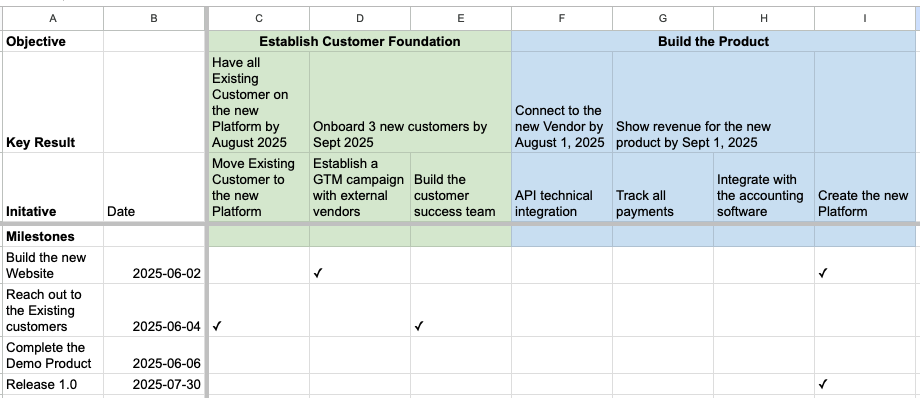OKRs can be a source of confusion for everyone. It is a very powerful management process that essentially aligns everyone toward common goals. In the course of making them conversations are forced that help high level strategy concerns get married to low level, day to day, tasks. It works though when done right and the hope is that everyone at the company feels like what they are working on is helping their company forward. If you can figure out how your tasks are doing that then you will feel more valued and if your tasks aren’t aligned you either need to stop going that direction or… sometimes the company needs to change.
These are the conversations that will come out of the process. However just to have these conversations there are a lot of confusing terms that come up and its a little like trying to play a board game before you read the rules. This entry is simply to help explain what is meant by the various terms.
Objectives
This is the O in OKR. An Objective set a high-level, qualitative goal. An example would be “Establish Customer Foundation”. These are intented to be big, open ended, and more feeling than thinking. The CEO might be looking at the finances of the company and just know “We NEED to establish the customer foundation and soon in order to keep our company valueable to the investors”. It’s like he is in the bridge of a ship and shouts out an order, “Hard to port”, you don’t need to know why the ship is turning left, maybe it is an ice berg, maybe there is a war, or a storm. But the ship needs to work together to make this happen.
Key Results
This is the KR in OKR. A Key Result defines measurable success criteria “Onboard 20 customers by Oct 31”. The Key Result defines a measurable outcome that needs to happen to accomplish the Objective. You really should have between 3-5 of these for every objective. If you have 1 it is too focused, if you have 20 then it is too dilluted and no one knows which is the most important. Sometimes I have even asked leader to weight the KRs so that we know how important each one is to the leader. This is also a handy practice to get the conversation be about prioritizing or understanding if there are other objectives.
Initiative
These describe major workstreams and projects for how you will accomplish the Key Result. For example “Run outreach campaign for exiting customers”. This really breaks down the KR further into the large tasks needed to get the outcome for the KR. Initiatives are the Tasks, KRs are anticipated Outcome of doing the tasks.
Milestones
Milestones track progress toward initiatives. An example would be“Identify all existing customers by July 1, 2025”. These can be used to make sure the initiatives are on track so that you can get to the outcome of the KR to accomplish the Objective. I think these are also the most tangible artifacts because there is a date assigned to them.
How these work together
Typically you define the Objectives first, then the Key Results. After that you figure out the Initiatives to make the Key Results happen and then finally come up with the Milestones each Initiative needs to stay on track.
It ends up looking a lot like this.

Here is a simple spreadsheet that you can use as a worksheet to get you started.